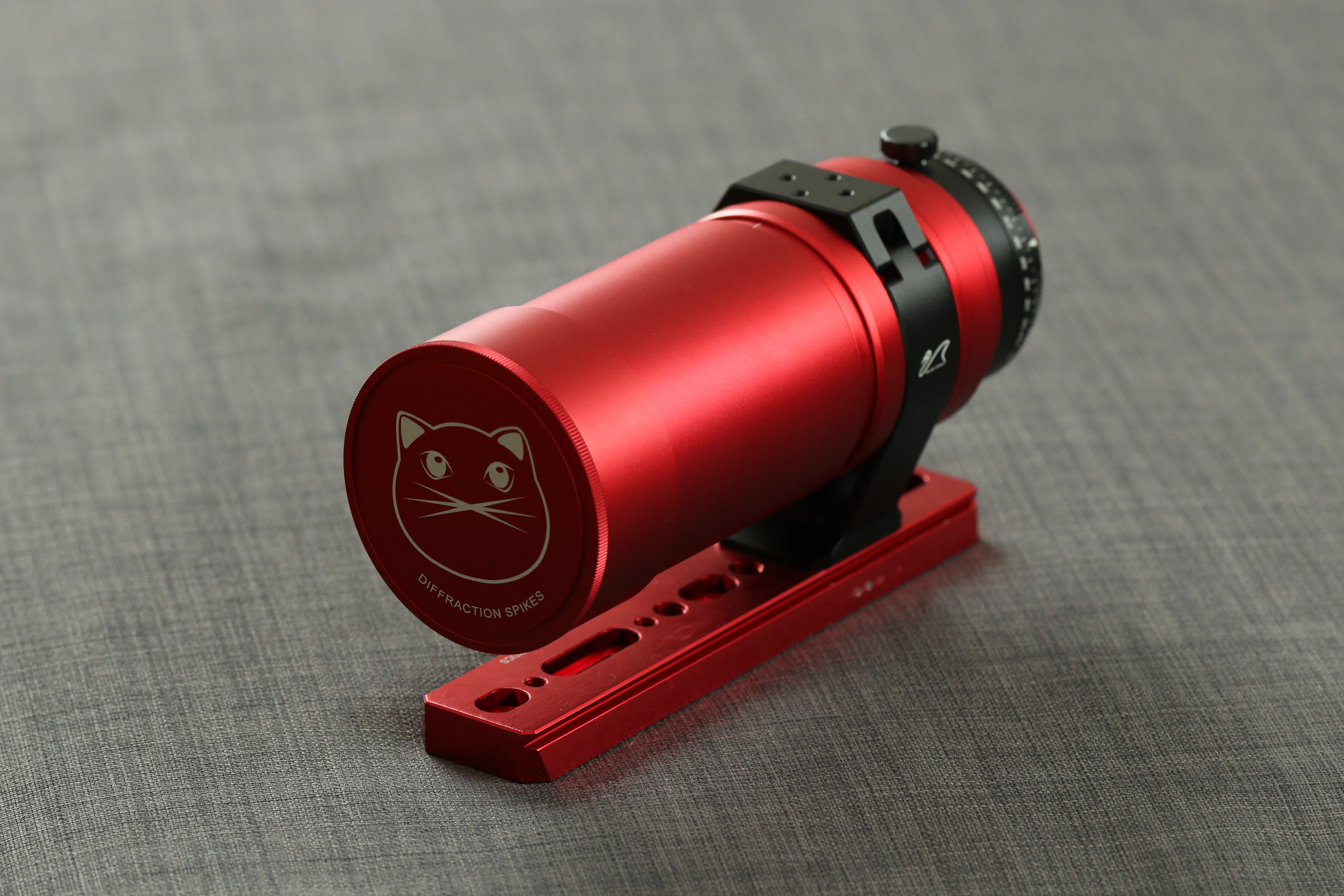Redcat 51 II-U

A Great Astrograph to Get Started
The William Optics RedCat 51 is a highly influential small wide-field refractor.
It has become a popular choice among amateur astronomers for starting out in astrophotography, and for good reason.
The RedCat 51 features well-corrected optics, is easy to use, and includes thoughtful additions like a Bahtinov mask integrated into the lens cap.
Its four-lens Petzval design eliminates the challenge of setting correct backspacing, as the entire lens assembly moves when focusing.
This means that as long as you can reach focus, you're all set, no need for extra spacing adjustments.
With a short focal length of just 250mm and a fast f/4.9 focal ratio, this telescope is also easy to autoguide.
In fact, I initially used it without guiding at all, relying only on good polar alignment, which was sufficient at these shorter focal lengths.
The fast f/4.9 focal ratio also allowed me to get away with 30-second exposures, making it a forgiving scope for beginners.
Another great feature is its compact size.
The dew shield can be detached and screwed on in reverse for transport, making an already small telescope even more compact, ideal for traveling to a dark site if needed.
Some Minor Issues
Despite its many positives, I did encounter a few minor downsides with this scope.
Earlier versions of the RedCat 51 used a helical focuser design, similar to camera lenses.
While this design keeps the telescope compact, I found that achieving precise focus could sometimes be difficult, as adjusting the helical focuser without accidentally knocking the tripod out of polar alignment was tricky.
Additionally, the focus locking/friction mechanism, which secures the focus once you've achieved pinpoint stars, can present a potential issue in cold weather.
When bringing the scope inside after a cold winter night, the aluminum tube expands as it warms up, causing the locking mechanism to tighten.
If the lock is not loosened beforehand, this can damage the focuser.
If you're purchasing a secondhand unit, keep this in mind and check for any irregularities in the focus mechanism.
That said, newer versions of the RedCat 51 have since replaced the helical focuser with a more traditional focusing design, which resolves nearly all of the issues I encountered.
Another minor inconvenience is the lack of mounting points for accessories like an ASIAIR or similar equipment.
While the scope does have a finder shoe to easily mount a guide scope, it is not included with the telescope.
Mounting anything beyond a guide scope requires some creative solutions.
When I first tried to attach an ASIAIR Plus, I quickly realized the lack of mounting options and had to 3D-print a custom bracket to resolve the issue.
Summary
Overall, I am very happy with this small astrograph. It is a fantastic starter scope that is capable of capturing high-quality data, making it a telescope that will stay in my collection for wide-field shots.
Positives:
- Well-corrected optics
- Easy to use
- No difficulty with backfocus
- Compact and travel-friendly
- Integrated Bahtinov mask
Negatives:
- Helical focuser design (resolved in newer versions)
- Limited mounting options for accessories